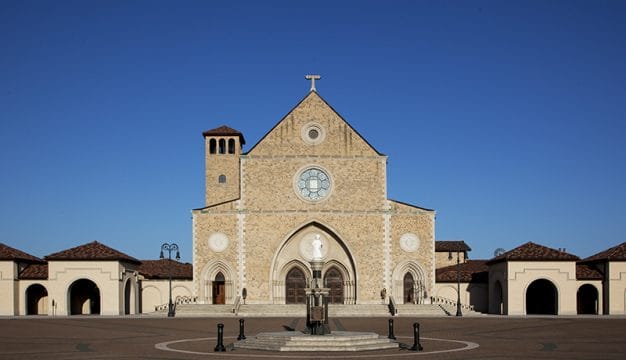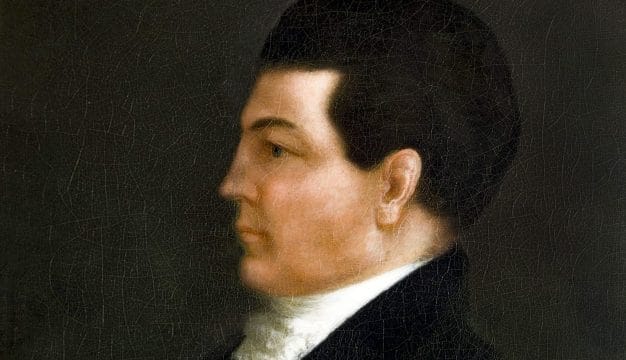Le Moyne Brothers
 Charles Le Moyne de Longueuil
Of the 14 children of Charles Le Moyne de Longueuil (1626-1685) and Catherine Thierry (1641-1690) of Montreal, Canada, (then known as New France), four played prominent roles in the exploration and colonization of what is now Alabama. Two, Pierre and Jean-Baptiste, served as governors of the French colony of Louisiana, which included present-day Alabama, Louisiana, and Mississippi. Antoine and Joseph both served under the command of their brothers and helped establish forts and settlements in lower Alabama and surrounding areas, many of which still bear the names given to them by the Le Moynes.
Charles Le Moyne de Longueuil
Of the 14 children of Charles Le Moyne de Longueuil (1626-1685) and Catherine Thierry (1641-1690) of Montreal, Canada, (then known as New France), four played prominent roles in the exploration and colonization of what is now Alabama. Two, Pierre and Jean-Baptiste, served as governors of the French colony of Louisiana, which included present-day Alabama, Louisiana, and Mississippi. Antoine and Joseph both served under the command of their brothers and helped establish forts and settlements in lower Alabama and surrounding areas, many of which still bear the names given to them by the Le Moynes.
The Le Moyne brothers were all born in Montreal, New France. Their father, a trapper and trader, emigrated to Canada in 1641 and after distinguished military service to France was ennobled, choosing the title Sieur de Longueuil, and quickly earned a place as a colonial leader. Le Moyne’s sons also served in the military in France’s colonial holdings and in Europe, and all of the brothers received titles of nobility from the French government. These traditionally followed the family surname and were used to denote each man. They are used in this manner in the following discussion of the members of the family who were important to the history and settlement of Alabama.
Pierre Le Moyne d’Iberville et d’Ardillières
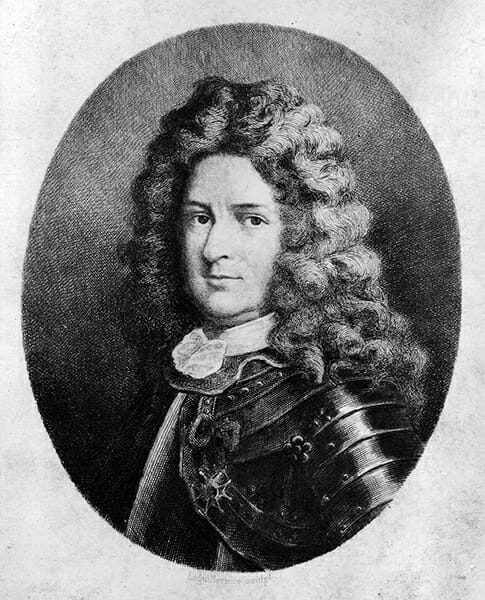 Pierre Le Moyne d’Iberville
Of all the Le Moyne brothers, Pierre (1661–1706), known as Iberville, played the greatest role in the early settlement of what is now Alabama. Baptized in Montreal on July 20, 1661, Iberville served in the French military as a sailor and soldier, and his expertise and bravery in battle earned him a place as New France’s greatest military hero in the continual wars over territory between France and England during the seventeenth century. He and two of his brothers made numerous forays against English outposts around Hudson Bay. His military successes during the 1690s earned him a high-ranking commission in New France’s military, and in 1697 he led the French Canadian forces to victory in the Battle of Hudson Bay.
Pierre Le Moyne d’Iberville
Of all the Le Moyne brothers, Pierre (1661–1706), known as Iberville, played the greatest role in the early settlement of what is now Alabama. Baptized in Montreal on July 20, 1661, Iberville served in the French military as a sailor and soldier, and his expertise and bravery in battle earned him a place as New France’s greatest military hero in the continual wars over territory between France and England during the seventeenth century. He and two of his brothers made numerous forays against English outposts around Hudson Bay. His military successes during the 1690s earned him a high-ranking commission in New France’s military, and in 1697 he led the French Canadian forces to victory in the Battle of Hudson Bay.
Later that year, Iberville sailed to France, where King Louis XIV appointed him leader of an expedition charged with establishing a series of forts that would protect France’s territories in the Mississippi Valley, which had been claimed some 15 years earlier by explorer Robert de La Salle. Iberville’s task was to rediscover and secure the mouth of the Mississippi and lay the foundations for future colonization of the Gulf Coast and the interior woodlands.
In late 1698, Iberville left the port of Brest, France, with four vessels, accompanied by his 18-year-old brother Jean-Baptiste (Le Moyne de Bienville). The flotilla reached Pensacola Bay the following year and, finding the best site occupied by the Spanish, continued west to what is now Mobile Bay. Iberville and his crew explored present-day Dauphin Island, which they named Île du Massacre (Massacre Island) after finding a number of skeletons there, and then continued up the Mississippi River. After struggling to find an ideal location, Iberville finally ordered construction of Fort Maurepas on Biloxi Bay at what is now Ocean Springs, Mississippi. Iberville then returned to France but made two additional exploratory expeditions to the Gulf Coast in 1700 and 1701. His activities were recorded in the Annals of Louisiana from 1698 to 1722 by ship’s carpenter André Pénigaut. In 1702, Iberville relocated the settlement, called Fort Louis de la Louisiane, to the Mobile-Tensaw Delta near the site of present-day Mobile. Fort Louis and the surrounding settlement would serve as the first capital of the vast expanse of territory known as La Louisiane. In 1706, while engaged in naval battles with the English, Iberville contracted yellow fever and died in Havana, Cuba.
Jean-Baptiste Le Moyne de Bienville
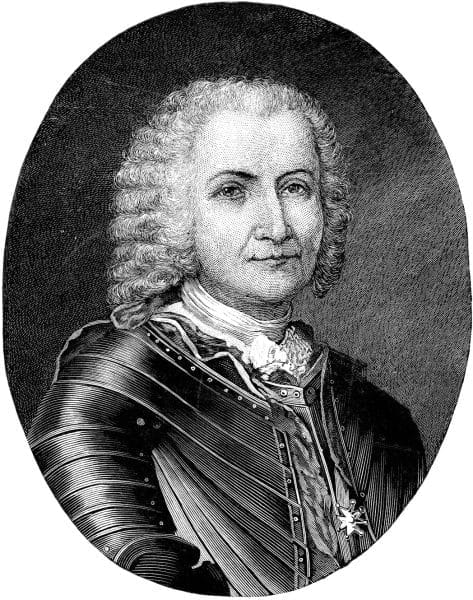 Jean-Baptiste Le Moyne de Bienville
Iberville’s efforts at establishing a French presence on the Gulf Coast were ably aided by his younger brother Jean-Baptiste Le Moyne de Bienville (1680–1767), who was baptized in Montreal on February 24, 1680. Bienville began his naval service in 1692 as a midshipman and fought in the battles for Newfoundland and Hudson Bay between English and French forces. Wounded in action at Hudson Bay, he recuperated in France and then joined Iberville on the expedition to rediscover the mouth of the Mississippi and to protect France’s vast territory from its archrivals, Spain and England.
Jean-Baptiste Le Moyne de Bienville
Iberville’s efforts at establishing a French presence on the Gulf Coast were ably aided by his younger brother Jean-Baptiste Le Moyne de Bienville (1680–1767), who was baptized in Montreal on February 24, 1680. Bienville began his naval service in 1692 as a midshipman and fought in the battles for Newfoundland and Hudson Bay between English and French forces. Wounded in action at Hudson Bay, he recuperated in France and then joined Iberville on the expedition to rediscover the mouth of the Mississippi and to protect France’s vast territory from its archrivals, Spain and England.
As discussed earlier, the Spanish had already established a stronghold at Pensacola, and the British followed close on the heels of the Le Moyne fleet. In late 1699, Captain William Bond entered the Mississippi Delta, but he was repelled by Bienville, who audaciously ordered him to abandon the area. When Iberville returned in January 1700, he ordered the construction of Fort La Boulaye on the river south of present-day New Orleans and named Bienville commandant.
The post was Bienville’s first position of authority. He was only 20 years old, but despite his youth proved a talented leader and worked well with the local Indian nations—the Mobile, the Biloxi, and the Pascagoula—all of whom helped support the colony. In addition, Bienville, a talented linguist, was able to persuade members of several tribes, the Chato in particular, to settle near Mobile and serve as buffer villages against the Spanish—an effort made all the more important by the outbreak of the War of the Spanish Succession (1701–13). Bienville successively served as commandant of Fort La Boulaye on the Mississippi, Fort Maurepas, and finally Fort Louis at Mobile.
Despite Bienville’s achievements, he made a number of enemies in the colony. Many of these strained relationships stemmed from the questionable business activities of his brothers Iberville and Sérigny, both of whom made substantial fortunes from profiteering. The ill will resulting from their dealings damaged Bienville’s credibility as a leader among the colonial authorities in France. Bienville weathered these storms and continued to help the young Mobile colony grow, but the repercussions continued for some time. When Iberville, then governor of Louisiana, died in 1706, the French government passed Bienville over for the post and instead named Nicolas Daneau de Muy as the territory’s new governor.
For the next quarter-century Bienville served in a top leadership capacity in Louisiana. In 1711, he oversaw the relocation of the territorial capital from Old Mobile at Twenty-Seven-Mile Bluff down to its present site, and in 1717 he established Fort Toulouse near present-day Wetumpka, Elmore County. A severe hurricane that year ruined Mobile’s chief port at Dauphin Island, and Bienville moved the capital back to Ocean Springs in present-day Mississippi, near where Fort Maurepas had once stood. Two years later he moved the capital to New Biloxi, and two years after that moved it to New Orleans, where it would remain until 1763.
Bienville commanded extreme respect among the settlers of Mobile, Dauphin Island, Biloxi, and New Orleans as well as among the local Indian leaders, and his abilities were highly regarded. It was not until 1732, however, that Bienville was officially appointed governor of the colony, a post he had long sought. Three years later, he oversaw construction of Fort Tombecbe, near present-day Epes, Sumter County, which would serve as a trading post and military outpost. Bienville launched two unsuccessful campaigns against the Chickasaws from the fort in 1736.
Through great difficulties, and with meager support from the French Court, Bienville overcame many obstacles to create a vast French colony. In 1743, after 44 years as one of France’s most important colonial leaders, Bienville retired from public duty. He journeyed to Paris that same year, began a long, uneventful retirement, and died in Paris in 1767 at the age of 88. Unlike his brothers, Bienville never married and left no offspring. His career in Louisiana lasted for nearly four and a half decades, far exceeding that of any other colonial leader. Although Iberville is remembered as the founder and first governor of Mobile, Bienville, by virtue of his long and admirable service, can rightfully be called the “Father of Louisiana.”
Antoine Le Moyne de Châteaugué
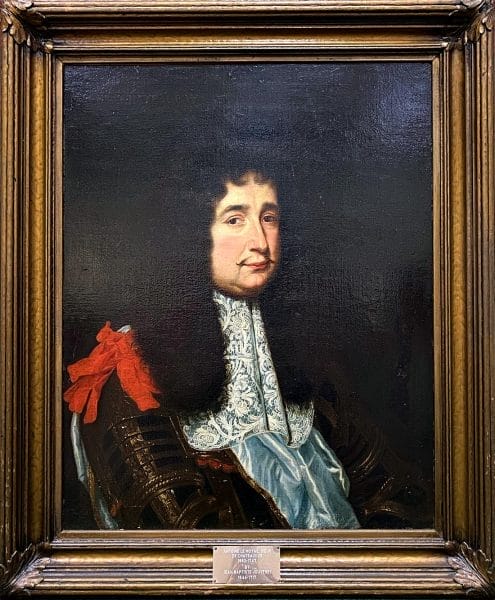 Antoine Le Moyne de Châteaugué
Antoine Le Moyne de Châteaugué (1683–1747), baptized sometime in 1683 in Montreal, was the youngest of the Le Moyne brothers and began his career as a midshipman in the French navy. In 1698, he accompanied his brothers Iberville and Bienville on an expedition to rediscover the mouth of the Mississippi River. In 1700, Châteaugué aided Bienville in establishing Fort La Boulaye on the lower Mississippi, and two years later he was placed in charge of the new fort and warehouse on Dauphin Island at the entrance to Mobile Bay. Châteaugué served in various administrative positions in Mobile, Dauphin Island, and New Orleans for more than four decades. He returned to France in the mid-1740s and died on March 21, 1747, in Rochefort.
Antoine Le Moyne de Châteaugué
Antoine Le Moyne de Châteaugué (1683–1747), baptized sometime in 1683 in Montreal, was the youngest of the Le Moyne brothers and began his career as a midshipman in the French navy. In 1698, he accompanied his brothers Iberville and Bienville on an expedition to rediscover the mouth of the Mississippi River. In 1700, Châteaugué aided Bienville in establishing Fort La Boulaye on the lower Mississippi, and two years later he was placed in charge of the new fort and warehouse on Dauphin Island at the entrance to Mobile Bay. Châteaugué served in various administrative positions in Mobile, Dauphin Island, and New Orleans for more than four decades. He returned to France in the mid-1740s and died on March 21, 1747, in Rochefort.
Joseph Le Moyne de Sérigny et de Loire
Joseph Le Moyne de Sérigny (1668–1734) was born on July 22, 1668, in Montreal. Like Iberville, he was a hero in the wars against the English and also aided Iberville in the settlement of Mobile Bay. He helped Châteaugué and Bienville in the establishment of the fort and warehouse on Dauphin Island and later in 1718 served with Bienville as joint commander of the colony. A few years later, after disentangling himself from charges of profiteering, Sérigny returned to France and was appointed governor of the port of Rochefort, a position he held until his death in 1734.
Further Reading
- Giraud, Marcel. A History of French Louisiana. 5 vols. 1698–1731. Reprint, Baton Rouge: Louisiana State University Press, 1974–91.
- Higginbotham, Jay. Old Mobile: Fort Louis de la Louisiane, 1702-1711. Tuscaloosa: University of Alabama Press, 1991.
- O’Neil, Charles Edwards. Church and State in French Colonial Louisiana: Policy and Politics to 1732. New Haven, Conn.: Yale University Press, 1968.
